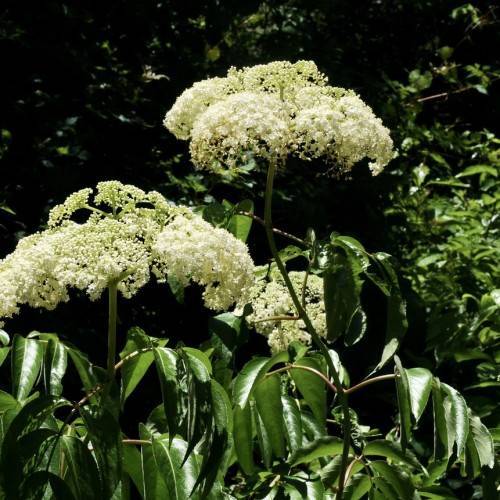
American black elderberry
Sambucus canadensis
Cycle:
Perennial
Watering:
Frequent
Hardiness Zone:
3 - 9
Flowers:
Flowers
Sun:
Full sun,part shade
Fruits:
Fruits Ready In Fall
Edible:
Yes
Leaf:
Yes
Growth Rate:
Low
Maintenance:
High
Drought Tolerant:
Yes
watering
It is important to water the American black elderberry (Sambucus Canadensis) regularly depending on the climate and soil moisture. Generally speaking, this species of plants should be watered deeply 1–2 times per week during the first few months of growth and emergence; then watered once per week during the summer months, and once every 2 to 3 weeks in the dry fall and winter months. Additionally, ensure that the soil around the base of the plant is kept slightly moist, rather than dry, in order to promote healthy growth and prevent root damage from excessive moisture.
sunlight
American black elderberry (Sambucus canadensis) prefer full sun but will grow in partial sun. They can tolerate shade, but not prolonged periods, so they should get around 4-6 hours of direct sunlight per day. This plant will do best in warm climates and will typically flower in late spring and early summer. The berries start ripening in mid-summer and are usually ready for harvesting in early fall.
pruning
Pruning for American black elderberry (Sambucus canadensis) should be done in late winter or early spring. Aim to prune the plant at least once a year to keep its size and shape in check. Start by removing any dead, diseased, or broken branches, and then trim back any straggly or spindly side shoots. You may also want to thin out the center of the shrub to improve air circulation. Finally, prune back any branches that are crossing or rubbing against 1 another, and shape the overall structure of the plant. Make sure to prune no more than 1-third of the total stem length of the shrub in any season, as this can cause stress and damage.
